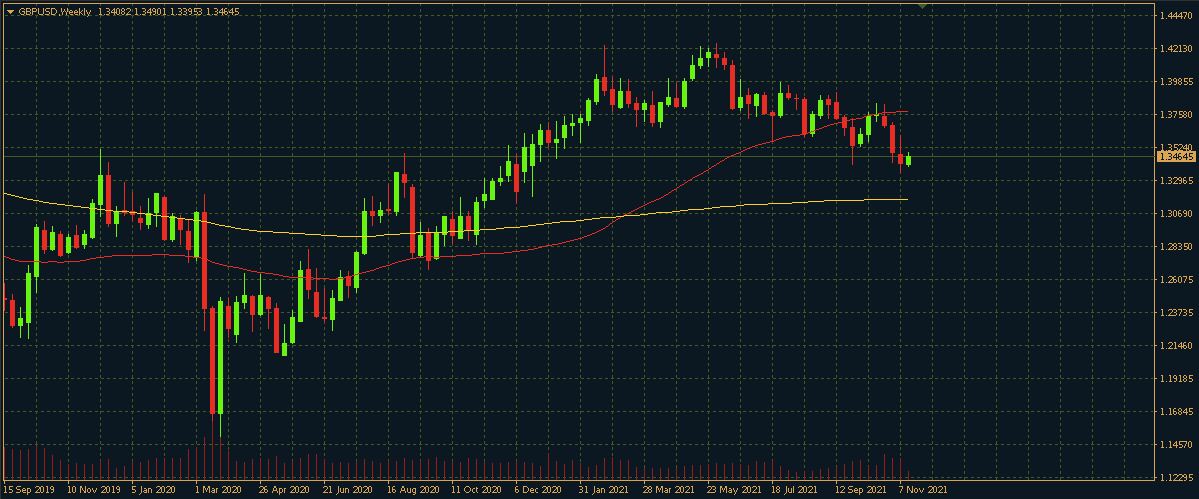
Gold 1865,545
|
EURUSD 1,1317
|
DJIA 35879,50
|
OIL.WTI 77,015
|
DAX 16251,50
|
|---|
On Wednesday it became known that UK inflation rose to ten-year highs. How have the prospects for a Bank of England rate hike changed and what will happen to sterling?
GBP/USD

Britain’s consumer price index rose 4.2% year-on-year in October, up from a 3.1% increase in September. Meanwhile, the Reuters consensus forecast was for inflation to reach 3.9%.
The main reason for this surge was the rapid increase in energy bills. The regulatory cap on bills was abolished in September. As a result, gas prices for consumers have risen by 28.1% since the beginning of the year.
Meanwhile, suppliers have suffered from rising wholesale gas prices, forcing some energy companies to shut down. Consumers switching suppliers have received even higher tariffs, adding to inflationary pressures.
The Bank of England predicts that the consumer price index will rise to 5% in a few more months before going into recession. Its head Andrew Bailey on Monday once again voiced concerns about rising inflation.
Against this background, expectations that the Bank of England will raise interest rate in December rose to 100%, supporting the pound.
And before that, a strong UK labour market report on Tuesday improved market sentiment as employment worries were the key argument that kept the central bank from hiking the rate for the first time in November.
There is also a 30% chance of another hike in the refinancing rate in February with a final increase to 0.5%.
From a technical point of view GBP/USD has bounced up from a strong mirror support level near 1.3350, which creates prospects for its recovery. If this horizon holds, the nearest upside target will be the 1.3700 area.
An alternative scenario for the GBP/USD to break 1.3350 and consolidate below would be a fall into the area around 1.3000.
14.30 Initial jobless claims in the US
14.30 Philadelphia Fed (USA) Manufacturing Activity Index for November
Important Notes on This Publication:
The content of this publication is for general information purposes only. In this context, it is neither an individual investment recommendation or advice nor an offer to purchase or sell securities or other financial products. The content in question and all the information contained therein do not in any way replace individual investor- or investment-oriented advice. No reliable forecast or indication for the future is possible with respect to any presentation or information on the present or past performance of the relevant underlying assets. All information and data presented in this publication are based on reliable sources. However, Bernstein Bank does not guarantee that the information and data contained in this publication is up-to-date, correct and complete. Securities traded on the financial markets are subject to price fluctuations. A contract for difference (CFD) is also a financial instrument with leverage effect. Against this backdrop, CFD trading involves a high risk up to the point of total loss and may not be suitable for all investors. Therefore, make sure that you have fully understood all the correlating risks. If necessary, ask for independent advice.
